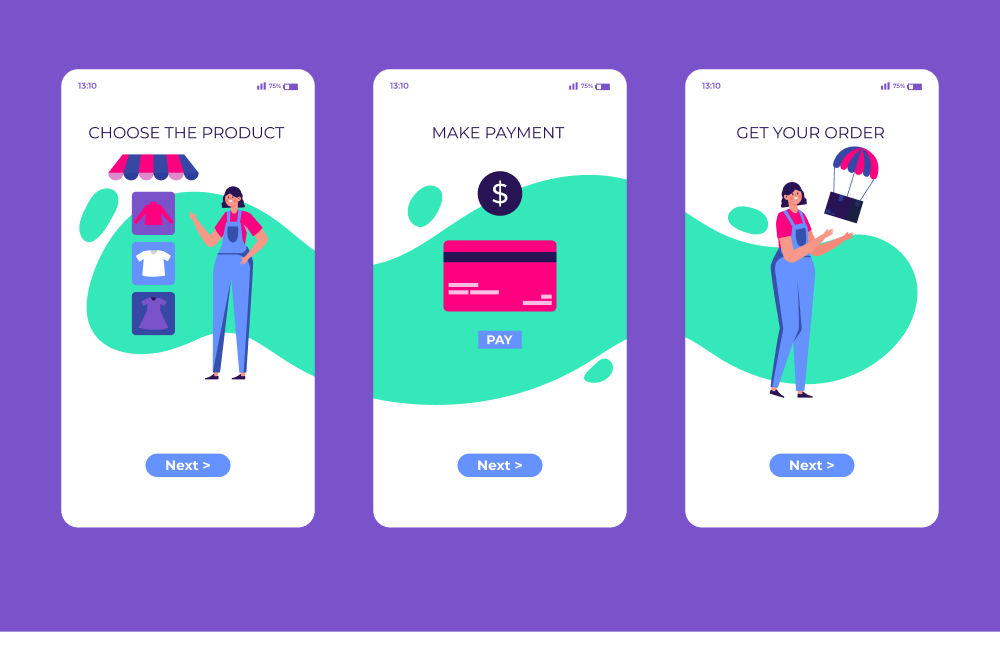You know when you first open an app, and you come across that welcome menu or tutorial on how to use the app? Well, that's app onboarding!
In this first moment of contact, you need to demonstrate how your app will "solve this user's problem", it is the moment to align your client's expectations with your product and make him understand how your app will serve him, how it will be useful to him, or how it will entertain him. If at first there is not a good onboarding experience, there are some trends in how your "near-user" may act, for example:
The user will try to use your app, perhaps not understand how it works, and get frustrated, uninstalling the app.
Maybe the user succeeds in using your app, but was not impressed with your onboarding - i.e. the user experience was not pleasant or memorable, and your app will be forgotten in the app gallery until it is needed at some point, or also uninstalled.
Uninstalling within the first few moments of contact with an app is recurring, 1 in every 2 apps are uninstalled within the first 30 days of download, and 45% of these uninstalls occur within the first 24 hours.
Users are spending more and more time on their smartphones, approximately 4.8h a day on average according to App Annie's recent State of Mobile 2022 report. In addition, in 2021 there will be more than 230 billion app downloads, meaning that the competition for new users' attention is wilder than ever. Therefore app marketers and app developers cannot afford not to create an excellent user onboarding process, and win over newcomers already in the first moments of contact.
Think about your favorite application, do you remember what it was like the first time you used it? Was it easy or hard to understand how the features of this app worked? Do you use it easily today or not?
App developers and UX designers have probably had to test apps and answer similar questions when creating onboarding processes. At the heart of this process is the user journey.
The user journey comprises the entire path your user will follow when using your app to complete specific actions and achieve the desired goal when he/she decides to use your app. On this path, your user will be affected by your app's UX and UI, your onboarding process and user-friendly interface, and usability in general.
Usability, on the other hand, is understood as how easy it is for the average person (user) to use your product effectively, efficiently, and satisfactorily. The more your product focuses on user experience, the better the usability tends to be.

As Steve Krug would say in his book Don't Make Me Think, the first rule of usability for your product should always be "Don't make me think!" Your users hardly want to be taken on a long, tiring and extremely detailed journey the first time they use your app, no one has that much time to spend, or that much focus to stay long in an onboarding process.
So whether your onboarding model is more explanatory, or more focused on collecting user data, or even focused on demonstrating the benefits of your app from the beginning, we've listed here some industry best practices that can enhance the user experience in your onboarding.

Duolingo's onboarding is very interactive, from the very beginning Duolingo starts collecting data from the user to better understand what kind of student he will be.
After the student chooses the course he wants to take, his level, and the amount of time he wants to invest in it, Duolingo already takes the user to a first language class or placement test. In this way, the user already understands how the Duolingo classes work actively by participating in his or her first experience.
After completing the class, the user is given an animated summary of their progress and points they have received, as well as being informed about other features of the application. Then the user is taken to a screen to sign up for the app manually or by linking their existing Google or Facebook accounts, and also has the option to skip the registration and just continue using the app with limited access to its features.
In a mobile world that is becoming more personalized for users, with so many apps appearing daily and more competitive than ever, it is essential to understand what your users need and surprise them with your solutions.
Still don't have a user acquisition and retargeting solution for your app? Don't worry, Rocket Lab can help you with your UA and retargeting strategies in 2022, contact us!